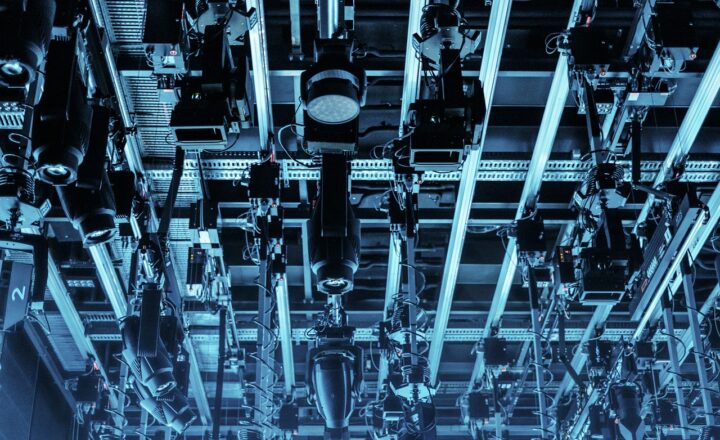How Drones Are Revolutionizing Everything from Delivery to Disaster Relief
November 10, 2024

Drones have quickly transitioned from toys and remote-controlled gadgets to vital tools in various industries, fundamentally transforming how we approach tasks ranging from delivery services to disaster relief efforts. With advancements in technology and declining costs, drones are becoming more affordable and accessible than ever before. They serve as versatile tools that can provide real-time data, facilitate efficient delivery systems, and even assist in dangerous rescue operations. In this article, we’ll explore the many ways drones are revolutionizing diverse sectors, examining their impact on everyday life and future possibilities.
1. The Evolution of Drone Technology
Drones, or Unmanned Aerial Vehicles (UAVs), have come a long way since their initial military applications. Early designs were bulky, expensive, and primarily used for reconnaissance missions. However, the digital revolution has led to significant advancements in drone technology, making them more compact, efficient, and user-friendly.
Today’s drones come equipped with state-of-the-art features, including:
- High-Resolution Cameras: Drones can capture stunning aerial photographs and videos, making them invaluable for industries like real estate, tourism, and media.
- GPS and Navigation Systems: Most modern drones can autonomously navigate using GPS technology, making them reliable for delivery and surveying tasks.
- Improved Battery Life: Advances in battery technology have dramatically increased flight times, allowing drones to cover larger areas without frequent recharges.
- Payload Capacity: Drones can now carry heavier loads, enabling applications in logistics and delivery services.
These technologies have paved the way for practical uses across various sectors.
2. Drones in Delivery Services
One of the most well-known applications of drones is in delivery services. Major companies like Amazon and UPS have invested heavily in drone technology, recognizing its potential to revolutionize last-mile delivery.
Benefits of Drone Delivery:
- Speed: Drones can bypass traffic, allowing for rapid delivery and minimizing wait times for customers.
- Cost Efficiency: By reducing transportation costs associated with traditional delivery methods, companies can pass on savings to consumers.
- Accessibility: Drones can reach remote areas that may be challenging for traditional delivery vehicles, ensuring that everyone has access to goods.
Real-World Applications:
– Amazon Prime Air: Aiming to deliver packages in 30 minutes or less, Amazon’s drone initiative is designed for efficiency and speed.
– UPS Flight Forward: This drone delivery service focuses on delivering medical supplies to hospitals, ensuring timely delivery in critical situations.
As regulations evolve to accommodate drone usage, we can expect to see even more companies exploring the possibilities of aerial delivery.
3. Drones in Disaster Relief Operations
Drones have also proven invaluable in disaster relief operations, providing immediate assistance in crisis situations. Their ability to quickly assess damage and deliver supplies can save lives and aid recovery efforts.
Key Applications:
- Search and Rescue: Drones equipped with thermal imaging cameras can locate missing persons in disaster-stricken areas, such as during floods or earthquakes.
- Damage Assessment: Aerial views obtained from drones allow emergency responders to assess the extent of destruction, enabling more effective resource allocation.
- Supply Delivery: During instances where roads are damaged, drones can deliver essential supplies like food, water, and medical aid directly to affected communities.
Examples of Drone Use in Disasters:
– Hurricane Harvey (2017): Drones monitored flood levels and delivered supplies to stranded citizens.
– Nepal Earthquake (2015): Drones were deployed to map the damaged areas, providing critical data to humanitarian organizations.
The role of drones in disaster relief is gradually becoming indispensable, helping organizations react swiftly and efficiently.
4. Drones in Agriculture
Agriculture is yet another domain where drones are making significant strides. Farmers are leveraging drone technology to increase productivity and optimize resources.
Applications in Agriculture:
- Crop Monitoring: Drones equipped with multispectral sensors can assess crop health by identifying problem areas, allowing farmers to address issues before they worsen.
- Precision Agriculture: Farmers can utilize drones for precision irrigation, ensuring optimal water usage and conserving resources.
- Soil Analysis: Drones can assess soil conditions, helping farmers make informed decisions about crop rotation and pesticide applications.
Drones are enabling farmers to gather valuable data more efficiently, streamlining operations, and enhancing yields.
5. Drones in Environmental Conservation
Drones are proving to be a useful tool in environmental conservation efforts, assisting in monitoring and protecting wildlife and natural resources.
Key Uses:
- Wildlife Monitoring: Drones help track wildlife populations, identify poaching activities, and monitor habitats without disturbing the animals.
- Forest Management: Drones can capture aerial images that help assess forest health and detect illegal logging activities.
- Reforestation: Some organizations are using drones to plant trees in hard-to-reach areas, aiding reforestation efforts.
Successful Initiatives:
– Poaching Surveillance: In Africa, drones have significantly helped fight poaching by monitoring protected areas and providing real-time data to rangers.
– Mapping Coral Reefs: Drones are being used to monitor coral reef health and assess the effects of climate change on marine ecosystems.
With the ability to gather data from previously inaccessible areas, drones are playing a vital role in conservation efforts across the globe.
6. Regulatory and Ethical Considerations
As drone technology continues to advance, several regulatory and ethical challenges must be addressed. Issues such as privacy concerns, air traffic regulations, and safety must be managed to ensure that drone usage remains beneficial.
Regulatory Developments:
– FAA Regulations: In the United States, the Federal Aviation Administration (FAA) has implemented regulations to guide the safe use of drones, requiring operators to hold licenses and adhere to specific operational guidelines.
– Global Standards: Different countries have varied regulations surrounding drone usage, creating a need for international collaboration to ensure safety and the ethical use of drone technology.
Ethical Considerations:
– Privacy Concerns: With drones capable of capturing high-resolution images, concerns about invasion of privacy and data security have arisen. It is essential for operators to respect individuals’ privacy rights.
– Accountability: As drones become more autonomous, determining liability in the case of accidents or errors presents legal complexities that need addressing.
Creating a framework for drone operation that considers both advancements in technology and the safety and rights of individuals will be key as we move forward.
Conclusion
Drones are revolutionizing various sectors, merging technology with practical applications that drive efficiency and enhance safety. From transforming delivery services and disaster relief to optimizing agriculture and aiding conservation efforts, their potential is vast and still largely untapped. As advancements continue to unfold, we can expect drones to play an even more integral role in our daily lives—an extraordinary innovation moving us toward a future where convenience, efficiency, and safety go hand in hand.
With thoughtful regulation and continued innovation, the sky is the limit for how drones will shape our world in the years to come.







